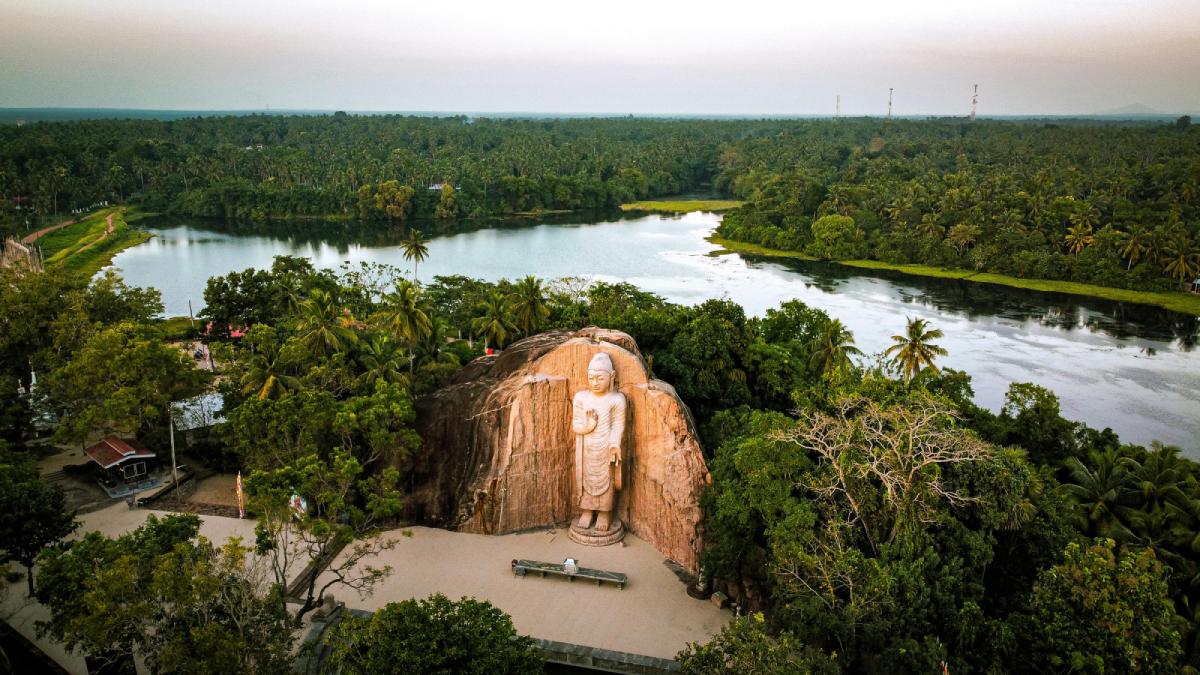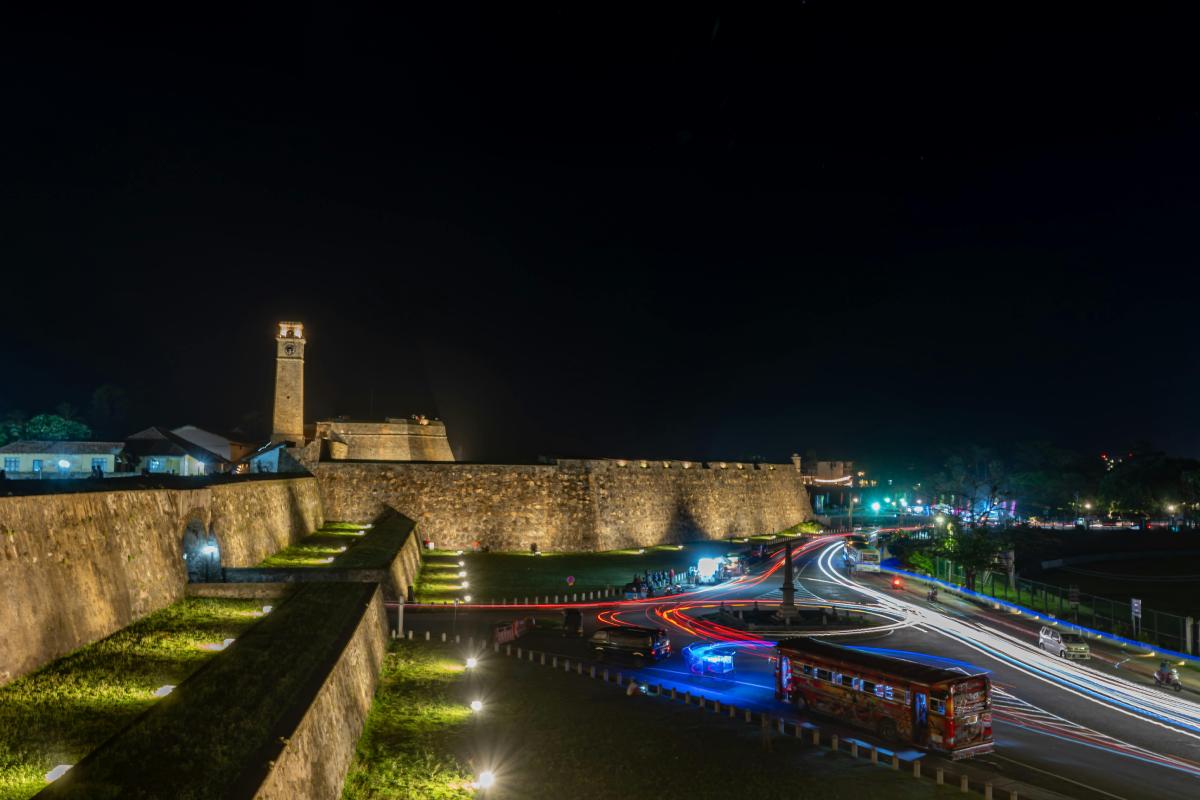Nestled in the misty highlands of central Sri Lanka, Nuwara Eliya presents a fascinating cultural anomaly – a slice of Victorian England preserved in the tropics. Often called “Little England” or “Little London,” this charming hill station sits 6,128 feet (1,868 meters) above sea level, offering visitors a unique blend of colonial heritage, natural beauty, and Sri Lankan hospitality. Let’s explore this remarkable destination, its history, attractions, and why it continues to captivate visitors from around the world.
The Colonial Origins of Nuwara Eliya
The story of Nuwara Eliya as “Little London” begins in the early 19th century. While the area was known to locals for centuries (the name “Nuwara Eliya” translates to “City of Light” or “City on the Plain” in Sinhalese), it was British colonial officer Sir Samuel Baker who is credited with establishing it as a hill resort in 1846.
Baker, an explorer and colonial administrator, was immediately struck by the region’s cool climate and landscape, which remarkably resembled the English countryside. The area’s temperate weather provided a welcome respite from the tropical heat that dominated much of Ceylon (as Sri Lanka was then known). Soon after Baker’s discovery, Nuwara Eliya became a favored retreat for British colonists seeking familiar surroundings and climate.
The British set about transforming this highland area into a home away from home. They constructed Tudor-style country houses, established flower gardens filled with roses and dahlias, created a golf course, built a racecourse, and even introduced trout to the streams. The architectural and cultural transformation was so complete that homesick British colonials could temporarily forget they were in South Asia.
Climate: The Scottish Weather of Sri Lanka
Perhaps the most “English” aspect of Nuwara Eliya is its climate. While much of Sri Lanka experiences tropical temperatures, Nuwara Eliya’s high elevation results in a temperate climate that can feel distinctly European:
- Average temperatures range between 10-20°C (50-68°F)
- Misty mornings are common throughout the year
- The region experiences significant rainfall, particularly during monsoon seasons
- December to March offers the most pleasant weather, with clear skies and cool temperatures
- Frost can occur during the coldest months, a rarity in Sri Lanka
This unique microclimate enabled the British to grow familiar European crops and flowers, further enhancing the region’s resemblance to the homeland they left behind. Today, this climate continues to attract domestic tourists escaping the coastal heat and international visitors seeking Sri Lanka’s diverse environments.
Colonial Architecture: A Living Museum, Best Places Visiting Nuwara Eliya
Walking through Nuwara Eliya feels like stepping into a time capsule of Victorian-era Britain. The architectural heritage remains remarkably intact, with numerous buildings showcasing classic colonial design elements:
The Hill Club
Founded in 1876, the Hill Club stands as perhaps the most emblematic colonial institution in Nuwara Eliya. Originally established as an exclusive social club for British gentlemen, it maintains much of its original character. With its wooden paneling, leather armchairs, hunting trophies, and strict dress code, the Hill Club continues to evoke the atmosphere of a traditional English gentlemen’s club. Today, it operates as a hotel where guests can experience colonial-era luxury.
The Grand Hotel
Once the residence of Sir Edward Barnes, Governor of Ceylon from 1824 to 1831, the Grand Hotel exemplifies colonial architecture at its finest. The sprawling property features Tudor-style design elements, manicured gardens, and an interior filled with period furniture. Afternoon tea on the terrace remains a popular tradition that connects visitors to the British colonial past.
The Post Office
Built in 1894, Nuwara Eliya’s red-brick post office with its clock tower and Tudor styling looks like it was transported directly from a quaint English village. Still functioning as a working post office, it stands as one of the most photographed buildings in the town.
Queen’s Cottage
This official holiday residence for Sri Lanka’s governors during colonial times (and now a presidential retreat) exemplifies the colonial bungalow style with its spacious verandas and manicured lawns. Though not generally open to the public, its exterior can be viewed and photographed.
Horticultural Heritage
The British colonists were passionate gardeners, and they transformed the landscape of Nuwara Eliya with familiar plants from home. This horticultural legacy remains evident throughout the region:
Victoria Park
Named after Queen Victoria, this carefully maintained public garden spans 27 acres in the heart of Nuwara Eliya. The park features wide lawns, winding paths, and flowerbeds filled with species that would be familiar to any English gardener. During peak season (March to May), the colorful displays of roses, dahlias, and other temperate flowers are particularly impressive. The park is also known for birdwatching, with several rare species making appearances.
Hakgala Botanical Gardens
Located about 10 kilometers from Nuwara Eliya, the Hakgala Botanical Gardens were established in 1861 as an experimental garden for cinchona cultivation (used for quinine production). Today, these botanical gardens display over 10,000 species of plants, with an emphasis on roses, ferns, and medicinal plants. Local legend connects the site to the Ramayana epic, claiming it was the pleasure garden of King Ravana.
The Tea Country Connection
No discussion of Nuwara Eliya would be complete without mentioning tea, the crop that transformed the region’s economy and landscape:
Tea Estates
The surrounding hillsides are carpeted with neatly manicured tea bushes, creating a distinctive landscape that draws photographers and nature lovers. Major estates like Pedro, Labookellie, and Mackwoods offer factory tours where visitors can observe the tea-making process from leaf to cup.
Tea History
In the 1870s, after coffee plantations were devastated by leaf rust disease, the British turned to tea cultivation. Nuwara Eliya’s climate proved ideal for producing high-quality high-grown Ceylon tea. Scottish planter James Taylor pioneered commercial tea production in Ceylon, transforming the island’s economy and creating an industry that continues to thrive today.
The region produces what tea connoisseurs consider some of the finest orange pekoe in the world, with distinctive floral notes and a bright character that reflects the unique growing conditions of the central highlands.
Recreational Colonial Traditions
The British brought their recreational pursuits to Nuwara Eliya, many of which continue to this day:
Nuwara Eliya Golf Club
Established in 1889, the 18-hole golf course is one of the oldest in Asia. Set against the backdrop of rolling hills and tea plantations, it offers challenging play at high altitude. The clubhouse maintains its colonial charm, and visitors can arrange day passes to experience this historic course.
Racecourse
Horse racing traditions continue at the Nuwara Eliya Racecourse, particularly during the April season when the town hosts its most prestigious racing events. The Spring Racing Festival attracts visitors from across Sri Lanka and beyond, with many embracing the tradition of formal dress reminiscent of Royal Ascot.
Natural Surroundings and Outdoor Activities
Beyond its colonial charm, Nuwara Eliya serves as a gateway to some of Sri Lanka’s most stunning natural environments:
Horton Plains National Park
Located about 32 kilometers from Nuwara Eliya, this UNESCO World Heritage Site features montane grasslands and cloud forest. The famous “World’s End” offers a sheer cliff with a drop of about 880 meters, providing spectacular panoramic views. The park is home to endemic species including the purple-faced langur, sambhur deer, and numerous bird species.
Lake Gregory
Created by damming the Nanu Oya river during Governor Gregory’s tenure in the 1870s, this artificial lake serves as a recreational center. Visitors can enjoy boat rides, jet skiing, and peaceful walks along the shore. The lake is surrounded by gardens and picnic spots, making it popular with families.
Pidurutalagala Mountain
Standing at 2,524 meters (8,281 feet), this is Sri Lanka’s highest mountain. While the summit houses military installations and is restricted, the lower slopes offer excellent hiking opportunities with views across the central highlands.
Cultural Blend: Where Sri Lanka Meets England
What makes Nuwara Eliya truly fascinating is not just its colonial preservation but the unique cultural synthesis that has emerged over time:
Culinary Fusion
Local restaurants serve traditional English fare like roast beef and Yorkshire pudding alongside Sri Lankan curries. The region is known for its strawberry cultivation, with roadside stalls selling fresh berries and homemade jam. Several establishments continue the tradition of proper English afternoon tea with scones, finger sandwiches, and locally grown tea.
Festivals and Events
The April season represents the height of Nuwara Eliya’s social calendar. Originally coinciding with the British celebration of Easter and spring, it now incorporates Sri Lankan New Year celebrations. The town comes alive with horse races, flower shows, golf tournaments, and motor rallies. During this period, the colonial heritage is most visibly celebrated, with locals and tourists alike embracing the festive atmosphere.
Modern Nuwara Eliya: Tourism and Beyond
Today’s Nuwara Eliya balances preservation of its colonial heritage with contemporary development:
Accommodation Options
Visitors can choose from colonial-era hotels like the Grand Hotel and Hill Club, modern resorts, or charming bungalows available for rent. Many tea estates have converted their planters’ bungalows into boutique accommodations, offering a uniquely immersive experience.
Local Economy
While tourism plays a significant role, tea production remains the backbone of the local economy. The region also produces vegetables, fruits, and flowers that supply markets throughout Sri Lanka. The cool climate allows for growing crops that don’t thrive in other parts of the island.
Environmental Challenges and Conservation
Nuwara Eliya faces environmental pressures that threaten its unique character:
Climate Change
The delicate microclimate that makes Nuwara Eliya special is vulnerable to global warming. Changes in temperature and precipitation patterns could affect both the natural environment and agricultural production, particularly tea cultivation.
Development Pressures
Balancing tourism growth with preservation presents ongoing challenges. Unregulated construction has sometimes compromised the colonial architectural integrity of the town. Conservation efforts aim to protect both the built heritage and the surrounding natural landscapes.
Visiting Nuwara Eliya: Practical Information
For travelers planning to experience Sri Lanka’s Little England, here are some essential details:
Getting There
Nuwara Eliya is approximately 180 kilometers from Colombo, a journey that takes 5-6 hours by road. Many visitors prefer the scenic train journey to nearby Nanu Oya station, followed by a short taxi ride to Nuwara Eliya town. The train route through the highlands is considered one of the world’s most beautiful rail journeys.
Best Time to Visit
While Nuwara Eliya can be visited year-round, the period from February to April offers the most pleasant climate with less rainfall. April is particularly lively with the season celebrations, though accommodations must be booked well in advance.
Must-See Experiences
- Take afternoon tea on the terrace of the Grand Hotel
- Visit a working tea factory to learn about production processes
- Explore Victoria Park during flowering season
- Hike to World’s End in Horton Plains (early morning recommended)
- Play a round of golf at the historic golf club
- Photograph the distinctive red post office
- Sample strawberries and cream at a local café
Conclusion: The Enduring Charm of Little London
Nuwara Eliya’s identity as “Little London” represents more than just colonial nostalgia. It stands as a testament to cultural exchange and adaptation, where British traditions were transplanted to Sri Lankan soil and evolved into something uniquely their own. The result is a destination that offers visitors multiple layers of experience: architectural heritage, natural beauty, agricultural productivity, and cultural synthesis.
As Sri Lanka continues to develop its tourism industry, Nuwara Eliya’s distinctive character ensures it remains a highlight on many travelers’ itineraries. Whether you’re seeking a cool retreat from tropical heat, a journey into colonial history, or simply the perfect cup of Ceylon tea enjoyed in its birthplace, this highland town delivers an experience that can’t be found elsewhere.
In Nuwara Eliya, the mists that frequently shroud the town seem to blur not just the physical landscape but also the boundaries between cultures and eras, creating a place where past and present, East and West, continue to coexist in fascinating harmony.


